Introduction
In an era where technology is rapidly transforming various industries, agriculture is no exception. Modern farming is undergoing a revolution, thanks to the integration of Artificial Intelligence (AI). This article explores the pivotal role of AI in contemporary farming practices and how it is reshaping the agriculture landscape.
In an era marked by the swift advancement of technology across various sectors, agriculture is experiencing a transformative revolution that is profoundly impacting the way we grow and harvest crops. At the heart of this agricultural evolution lies the integration of Artificial Intelligence (AI), a powerful force that is reshaping the very landscape of farming practices. In this exploration, we delve into the pivotal role of AI in contemporary agriculture and the remarkable changes it is bringing to this age-old industry.
Optimizing Resource Management: AI-powered solutions are revolutionizing resource management in agriculture. With the ability to process vast amounts of data from various sources, AI-driven systems enable farmers to make precise decisions about irrigation, fertilization, and pest control. By analyzing factors such as soil moisture levels, weather forecasts, and historical crop data, AI can recommend optimal planting times and help minimize resource waste. This not only boosts crop yields but also promotes sustainability by reducing water and chemical usage.
Predictive Analytics for Crop Health: AI’s predictive analytics capabilities are a game-changer for crop health management. By constantly monitoring data from drones, satellites, and ground-based sensors, AI algorithms can identify signs of disease, pests, or nutrient deficiencies in real-time. This allows farmers to take proactive measures, such as targeted spraying or irrigation adjustments, to protect their crops. As a result, AI-driven crop management minimizes losses, enhances yields, and fosters more resilient agricultural practices.
Precision Farming with Autonomous Machinery: AI has brought autonomy to farming machinery, making precision agriculture a reality. Autonomous tractors, equipped with AI systems, can navigate fields with precision, performing tasks such as planting, harvesting, and weeding without human intervention. These machines not only enhance efficiency but also reduce labor costs and the environmental impact of farming practices.
Crop Breeding and Genetic Enhancement: AI plays a vital role in crop breeding and genetic enhancement. Machine learning algorithms can analyze massive datasets of genetic information to identify traits that lead to higher yields, pest resistance, or drought tolerance. This accelerates the development of new crop varieties tailored to specific growing conditions, helping farmers adapt to changing environmental factors and market demands.
Supply Chain Optimization: From farm to fork, AI optimizes the entire agricultural supply chain. It helps streamline logistics, predicting optimal routes for transporting perishable goods and minimizing food waste. AI-powered tracking systems provide real-time visibility into the movement of agricultural products, ensuring freshness and quality throughout the supply chain.
As we witness the rapid convergence of technology and agriculture, it becomes evident that AI is at the forefront of this transformation. It empowers farmers with data-driven insights, automates labor-intensive tasks, and fosters more sustainable and efficient practices. The integration of AI not only enhances agricultural productivity but also aligns with the imperative of feeding a growing global population while conserving our planet’s resources. In this age of agricultural innovation, AI stands as a beacon of hope, ushering in a new era of smart and sustainable farming practices.
Don’t stop here; you can continue your exploration by following this link for more details: Learn How Artificial Intelligence is Transforming the Agriculture …
Precision agriculture, also known as precision farming, is a farming management concept that employs AI to optimize various aspects of farming. AI-driven precision agriculture involves collecting, analyzing, and applying data to make informed decisions regarding crop management. This data can include information about soil health, weather conditions, pest and disease threats, and crop growth patterns.
Precision agriculture, often referred to as precision farming, represents a groundbreaking farming management approach that harnesses the power of artificial intelligence (AI) to revolutionize every facet of modern agriculture. In the era of AI-driven precision agriculture, the fusion of cutting-edge technology and agricultural expertise is driving a transformation in the way we cultivate crops and manage agricultural resources. This approach encompasses a comprehensive cycle of data collection, analysis, and application to empower farmers with unparalleled insights and decision-making capabilities.
The AI-Powered Data Revolution: At the core of AI-driven precision agriculture is the seamless integration of data into farming practices. This encompasses a vast array of data sources, ranging from soil health assessments and real-time weather conditions to precise data on pest and disease threats and the nuanced growth patterns of crops. The marriage of AI and agriculture enables the collection and synthesis of this data on an unprecedented scale.
Informed Decision-Making: The true power of AI-driven precision agriculture lies in its ability to transform raw data into actionable insights. Through advanced analytics and machine learning algorithms, the collected data is meticulously analyzed to reveal patterns, trends, and correlations that would be impossible for humans to discern on their own. These insights empower farmers to make informed decisions with unparalleled precision.
Crop Management Optimization: AI-driven precision agriculture offers a dynamic approach to crop management. By constantly monitoring and assessing soil conditions, AI can recommend precise adjustments in irrigation, fertilization, and pesticide application. This level of precision ensures that resources are used optimally, minimizing waste and environmental impact.
Adaptive Strategies: One of the standout features of AI in precision agriculture is its adaptability. AI algorithms can respond in real-time to changing conditions. For instance, if unexpected weather patterns emerge, AI systems can adjust planting schedules or irrigation plans accordingly, maximizing crop resilience and yield.
Sustainability and Environmental Stewardship: AI-driven precision agriculture is not just about maximizing productivity; it also promotes sustainability and environmental stewardship. By reducing overuse of resources, minimizing chemical inputs, and mitigating soil erosion, this approach aligns with the imperative of responsible and sustainable farming practices.
Global Food Security: The application of AI in precision agriculture is poised to play a pivotal role in addressing the global challenge of food security. By maximizing crop yields while conserving resources, it contributes to ensuring a stable and sufficient food supply for a growing global population.
Economic Viability: Beyond its environmental and social benefits, AI-driven precision agriculture enhances the economic viability of farming operations. By optimizing resource utilization, reducing input costs, and increasing yields, it improves the financial health of farms and contributes to the livelihoods of farming communities.
In conclusion, AI-driven precision agriculture is not merely a technological advancement but a transformative force that reshapes the very essence of farming. It empowers farmers with data-driven insights, enhances sustainability, and addresses pressing global challenges. As AI continues to evolve, its integration into agriculture promises to further revolutionize the way we feed the world, fostering a more efficient, sustainable, and resilient agricultural sector.
To delve further into this matter, we encourage you to check out the additional resources provided here: Learn How Artificial Intelligence is Transforming the Agriculture …
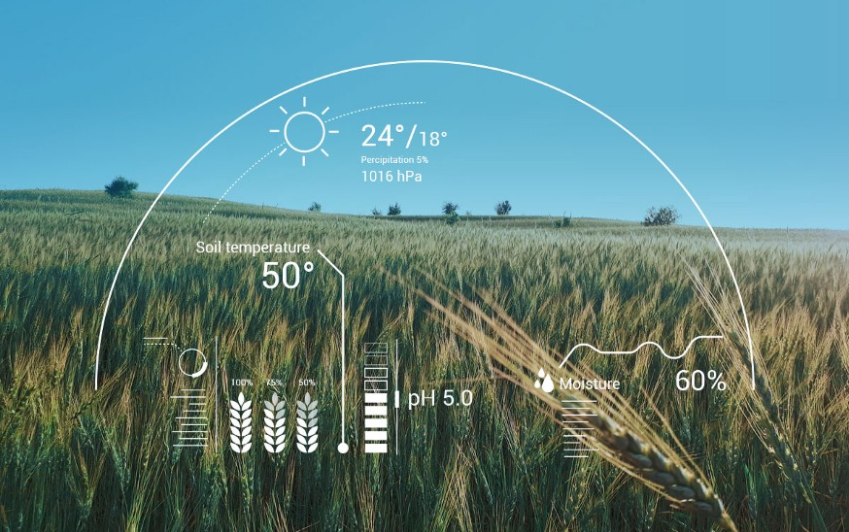
AI-powered drones and satellite imagery provide real-time data on crop health and growth. This information helps farmers identify issues such as nutrient deficiencies or pest infestations, enabling them to take timely corrective measures.
In the modern era of agriculture, the marriage of cutting-edge technology and farming practices has ushered in a revolution, with AI-powered drones and satellite imagery at the forefront. These remarkable tools serve as vigilant guardians of crop health, offering real-time data that empowers farmers to make informed decisions and ensure optimal yields.
AI-powered drones, equipped with high-resolution cameras and sophisticated sensors, take to the skies above fields, collecting a treasure trove of data. As they glide over vast expanses of crops, they capture detailed images and monitor various parameters crucial to plant health. This includes the assessment of chlorophyll levels, which indicate the vigor of crops, and the detection of subtle shifts in temperature, humidity, and soil moisture.
Satellite imagery complements this aerial perspective, providing a bird’s-eye view of entire fields and even entire farms. These satellites can capture images at regular intervals, creating a dynamic picture of crop growth over time. They can identify patterns and anomalies that may be invisible to the naked eye, revealing the story of a crop’s journey from planting to harvest.
The real magic unfolds when AI algorithms process this influx of data. These powerful algorithms analyze the images and information collected by drones and satellites, swiftly identifying deviations from the norm. If there are signs of nutrient deficiencies, diseases, or pest infestations, the AI doesn’t just recognize them; it interprets the data and provides actionable insights to farmers in real-time.
This timely information is invaluable to farmers, as it allows them to take immediate corrective measures. For example, if a section of a field shows signs of nutrient deficiency, a farmer can adjust their fertilizer application precisely to that area, optimizing resource use and improving crop health. In the case of pest infestations, early detection can mean the difference between a manageable situation and a potentially devastating crop loss.
Furthermore, this technology-driven approach to precision agriculture minimizes the need for blanket treatments with fertilizers or pesticides across entire fields. Instead, resources can be applied precisely where and when they are needed, reducing waste, environmental impact, and production costs.
AI-powered drones and satellite imagery have become indispensable tools in the arsenal of modern agriculture. They not only enhance crop monitoring but also empower farmers to be proactive stewards of their land. In an era where feeding a growing global population while conserving resources is paramount, these technologies are key to achieving sustainable and efficient agricultural practices, ensuring food security for generations to come.
You can also read more about this here: Sustainable Crop Protection via Robotics and Artificial Intelligence …
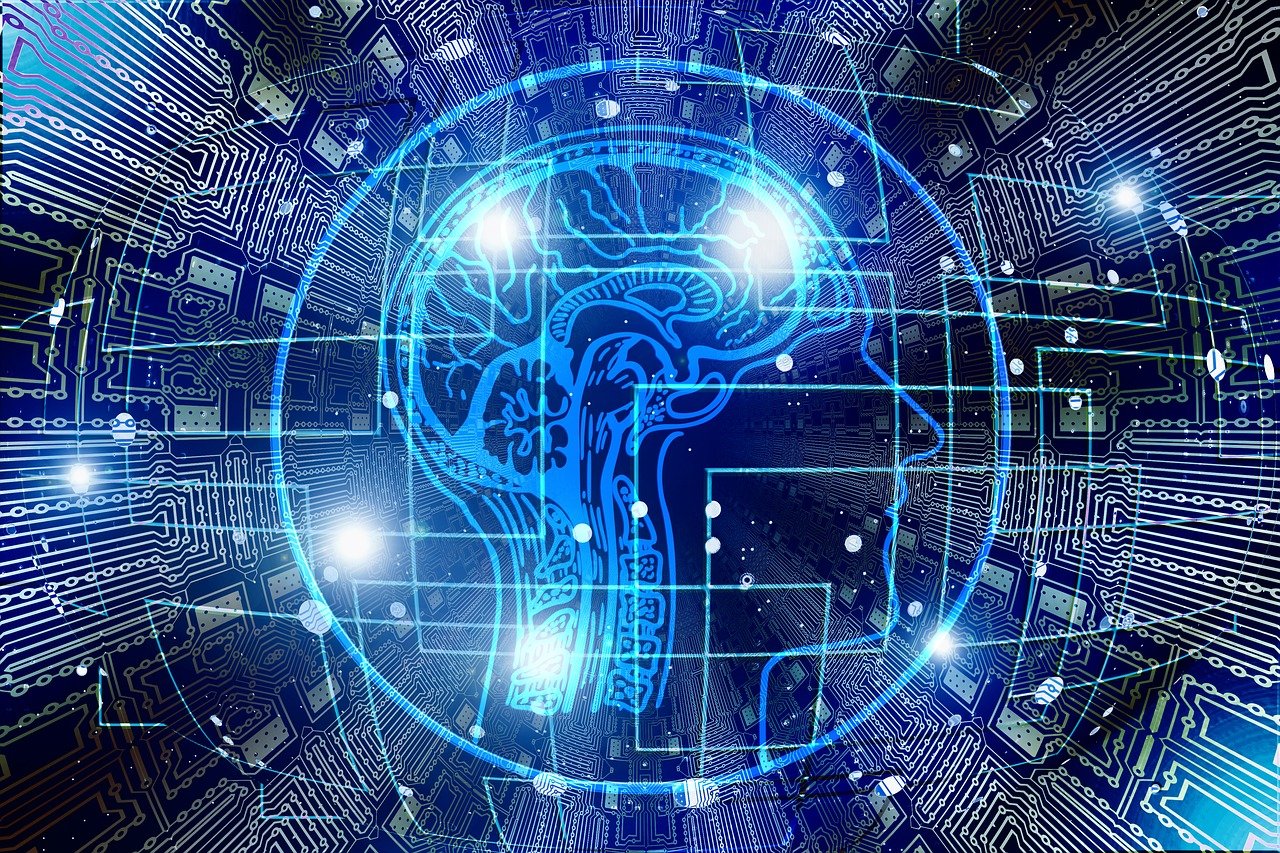
AI algorithms analyze historical and real-time data to predict factors like crop yields, disease outbreaks, and optimal planting times. These predictions empower farmers to make informed decisions to maximize productivity and minimize risks.
AI algorithms have ushered in a new era of data-driven agriculture, where the fusion of technology and agriculture revolutionizes how we cultivate crops and manage farms. By analyzing historical and real-time data, these algorithms predict a multitude of factors critical to farming success, including crop yields, disease outbreaks, and optimal planting times. The impact of AI on agriculture extends far beyond the field; it transforms the entire agricultural ecosystem, benefiting both farmers and the global population.
Data-Driven Decision-Making
The backbone of AI in agriculture is its ability to harness vast datasets encompassing weather patterns, soil quality, crop health, and more. By processing this information, AI algorithms generate valuable insights that farmers can use to make data-driven decisions. For example, AI can predict when precisely to plant crops to coincide with favorable weather conditions, maximizing yield potential. This level of precision minimizes the uncertainties traditionally associated with agriculture.
Crop Yield Optimization
AI’s predictive capabilities are particularly transformative when it comes to crop yield optimization. By analyzing historical data and factoring in current conditions, AI can forecast crop yields with remarkable accuracy. Farmers can use this information to plan their planting, harvest, and storage strategies. It enables them to make informed choices about the most suitable crop varieties for their region, leading to higher yields and more efficient resource allocation.
Mitigating Disease Outbreaks
One of the persistent challenges in agriculture is the threat of crop diseases. AI algorithms excel in monitoring and identifying disease outbreaks early. By analyzing data from sensors, drones, and satellite imagery, AI can spot subtle changes in crop health that might be indicative of a disease. Early detection allows farmers to implement targeted interventions, reducing the need for widespread pesticide use and minimizing crop losses.
Resource Efficiency
AI also promotes resource efficiency, a vital consideration in sustainable agriculture. By providing real-time information on soil moisture levels and nutrient content, AI helps farmers optimize irrigation and fertilization practices. This not only reduces resource wastage but also contributes to environmental conservation and cost savings.
Global Food Security
The implications of AI in agriculture extend to global food security. As the world’s population continues to grow, the demand for food production rises exponentially. AI-driven agriculture has the potential to meet this demand by significantly increasing crop yields and minimizing food waste. It plays a crucial role in ensuring that there is enough food to feed the planet’s ever-expanding population.
Empowering Farmers and Promoting Sustainability
AI in agriculture empowers farmers to become more effective stewards of the land. It encourages sustainable farming practices by minimizing the environmental impact of agriculture, reducing reliance on harmful chemicals, and optimizing resource allocation. It also strengthens the resilience of farming communities by helping them adapt to changing climate conditions and market fluctuations.
In summary, AI’s integration into agriculture represents a paradigm shift in the industry. By predicting crop yields, disease outbreaks, and optimal planting times, AI not only empowers farmers with invaluable insights but also promotes sustainability and contributes to global food security. As AI technology continues to advance, its potential to further enhance agricultural productivity and address the challenges of the 21st century becomes increasingly promising.
Don’t stop here; you can continue your exploration by following this link for more details: Learn How Artificial Intelligence is Transforming the Agriculture …

AI-driven sensors monitor soil moisture levels and weather conditions, allowing for precise irrigation management. This ensures that crops receive the right amount of water at the right time, reducing water wastage and promoting water conservation.
The marriage of artificial intelligence and agriculture is revolutionizing the way we approach one of the most critical aspects of farming: irrigation. AI-driven sensors, designed to monitor soil moisture levels and weather conditions, have ushered in a new era of precision in irrigation management.
These advanced sensors operate in real time, continuously analyzing the soil’s moisture content and cross-referencing it with the prevailing weather conditions. This dynamic data fusion allows for a level of precision that was once unimaginable. Farmers can now make informed decisions about when, where, and how much to irrigate, ensuring that crops receive the optimal amount of water precisely when they need it.
This precision in irrigation offers multiple benefits. Firstly, it curtails water wastage dramatically. Traditional irrigation methods often lead to overwatering or inefficient water distribution, resulting in substantial water losses. With AI-driven sensors, water is delivered precisely where it’s required, eliminating runoff and excessive usage. This not only conserves a precious resource but also reduces the associated costs for farmers.
Moreover, the judicious use of water through precision irrigation contributes to the sustainability of agriculture. In regions where water scarcity is a pressing concern, these technologies are a lifeline, allowing farmers to maximize crop yields while minimizing their environmental impact. It’s a harmonious balance that fosters both food security and responsible resource management.
Furthermore, precision irrigation enhances crop health and quality. By delivering water in precise amounts and at optimal times, crops can thrive without the risk of under- or overwatering, which can lead to stress, disease, and reduced yields. The result is healthier, more resilient crops that yield better produce.
In the grand tapestry of modern agriculture, AI-driven irrigation sensors represent a profound transformation. They are not only technological marvels but also powerful tools for sustainable farming. By reducing water wastage, promoting conservation, and improving crop health, these sensors are instrumental in securing the future of agriculture in a world with growing population demands and increasingly unpredictable climates.
If you’d like to dive deeper into this subject, there’s more to discover on this page: Agriculture’s technology future: How connectivity can yield new …
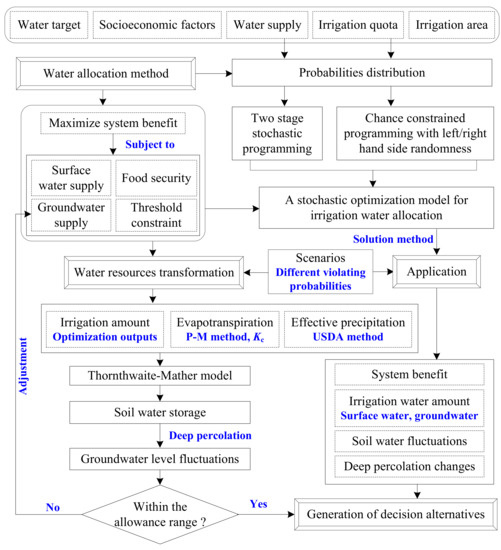
AI-powered robots equipped with computer vision can identify and selectively eliminate weeds without the need for chemical herbicides. Similarly, AI can assist in monitoring pest populations and triggering targeted interventions when necessary.
The integration of artificial intelligence (AI) in agriculture has ushered in a new era of sustainable and environmentally friendly farming practices. AI-powered robots, armed with advanced computer vision capabilities, are at the forefront of this revolution, bringing about significant improvements in weed management and pest control.
In the realm of weed management, AI-equipped robots have become invaluable allies for farmers seeking alternatives to chemical herbicides. These smart machines utilize computer vision to identify and distinguish between crops and unwanted weeds with remarkable precision. By autonomously navigating through the fields, they can selectively remove the weeds without harming the crops. This targeted approach not only reduces the reliance on harmful chemicals but also minimizes the risk of crop damage, ultimately leading to healthier and more abundant harvests.
Furthermore, AI extends its influence beyond weed control and into pest management. AI-driven monitoring systems are capable of continuously assessing pest populations in real time. By analyzing data from various sensors, including cameras and environmental sensors, AI can detect early signs of pest infestations. This proactive approach allows farmers to respond promptly and with pinpoint accuracy when intervention is required.
When pest thresholds are met or exceeded, AI can trigger specific interventions. For instance, drones equipped with pesticide sprayers can be dispatched to affected areas, delivering targeted treatments only where they are needed, minimizing environmental impact, and conserving resources. Additionally, AI can enable the deployment of beneficial insects or natural predators to control pest populations naturally, reducing the need for chemical pesticides even further.
The synergy between AI and agriculture is not limited to weed and pest management; it extends to optimizing overall farm operations. AI can analyze vast datasets related to crop health, weather patterns, and historical yields to provide farmers with predictive insights. These insights enable farmers to make data-driven decisions about planting schedules, irrigation, and fertilizer application, all contributing to resource efficiency and sustainable farming practices.
Moreover, AI-powered systems can optimize the use of water resources by precisely regulating irrigation based on soil moisture levels and weather forecasts. This not only conserves water but also reduces energy consumption, as less water needs to be pumped and distributed across the farm.
In conclusion, AI is transforming agriculture into a more sustainable and efficient industry. AI-powered robots and monitoring systems are revolutionizing weed management and pest control, reducing the reliance on harmful chemicals. Additionally, AI-driven data analysis is providing farmers with valuable insights for optimizing resource allocation, ultimately leading to more environmentally friendly and economically viable farming practices. As AI continues to evolve, its role in agriculture promises to be central to the future of sustainable food production.
Looking for more insights? You’ll find them right here in our extended coverage: Transforming Agriculture: Artificial Intelligence is Reshaping the …

Autonomous tractors and other farm machinery equipped with AI technologies can perform tasks like planting, harvesting, and weeding with precision and efficiency. These machines operate around the clock, increasing productivity and reducing labor costs.
The integration of autonomous tractors and AI technologies into modern agriculture represents a transformative leap forward in farming practices. These advanced machines are not just the future; they are already revolutionizing the industry by performing a multitude of tasks with unparalleled precision and efficiency.
Uninterrupted Operations: One of the standout advantages of autonomous machinery is their ability to operate around the clock. Unlike human labor, which is subject to fatigue and work-hour limitations, these machines can work tirelessly day and night. This non-stop operation extends the window for critical farming tasks, such as planting, harvesting, and weeding, ensuring that no precious time is wasted during optimal weather conditions.
Precision Farming: Autonomous tractors and machinery are equipped with sophisticated AI and GPS technologies that enable them to carry out tasks with extraordinary precision. They can navigate fields with accuracy measured in centimeters, ensuring that each plant is placed at the ideal distance and depth. Precision farming not only maximizes yields but also minimizes resource wastage, such as seeds, fertilizers, and water.
Reduced Labor Costs: As these machines become more sophisticated and prevalent, they reduce the reliance on human labor. While this can initially be a concern for labor-intensive rural communities, it can also lead to reduced labor costs for farmers. With autonomous machinery handling much of the workload, farmers can reallocate labor to other essential tasks that require human oversight and decision-making, such as crop management strategies or equipment maintenance.
Data-Driven Insights: Autonomous machinery not only perform tasks but also collect vast amounts of data during their operations. This data includes information on soil conditions, crop health, and performance metrics. By leveraging AI, farmers can transform this data into actionable insights. For instance, they can adjust planting patterns based on real-time soil data or detect early signs of disease or pest infestations, allowing for targeted interventions and better overall crop management.
Sustainability: The precision and efficiency of autonomous machinery have positive implications for sustainability. By reducing resource wastage and optimizing farming practices, these technologies contribute to more environmentally friendly farming. Farmers can use fewer inputs, minimize soil erosion, and reduce their carbon footprint, aligning with the broader goals of sustainable agriculture.
Scalability: Autonomous machinery can be scaled up or down to suit the needs of farms of varying sizes. Whether it’s a small family-owned farm or a large commercial operation, these machines can be adapted to match the scale of production. This scalability ensures that the benefits of automation are accessible to a wide range of farmers, fostering inclusivity and efficiency across the agricultural sector.
Resilience: Automation can enhance the resilience of farming operations. In the face of labor shortages, economic fluctuations, or unpredictable weather events, autonomous machinery can provide a level of consistency and reliability that is crucial for ensuring a stable food supply.
In sum, the adoption of autonomous tractors and AI technologies in agriculture signifies a fundamental shift in how farming is conducted. These machines offer precise, efficient, and data-driven solutions that increase productivity, reduce costs, and promote sustainability. As they continue to evolve and become more accessible to farmers worldwide, they hold the promise of addressing the challenges of food security, environmental stewardship, and the ever-growing demand for agricultural products in an increasingly complex world.
You can also read more about this here: Implementation of artificial intelligence in agriculture for optimisation …

AI optimizes the supply chain by tracking the movement of agricultural products from farm to market. It helps minimize waste, improve logistics, and enhance the overall efficiency of the agricultural value chain.
Artificial Intelligence (AI) is revolutionizing the agricultural supply chain by bringing unprecedented levels of efficiency, precision, and sustainability to the movement of agricultural products from farm to market. This transformative impact goes beyond waste reduction and logistics improvement; it extends to various facets of the agricultural value chain, benefiting both producers and consumers.
Real-Time Data Insights: AI enables real-time data collection and analysis throughout the supply chain. Sensors, drones, and smart devices can monitor factors such as temperature, humidity, and product quality during transportation. This data provides invaluable insights that help in making proactive decisions to ensure the freshness and quality of agricultural products.
Reduced Food Waste: One of the most significant contributions of AI in the supply chain is the reduction of food waste. By continuously monitoring and analyzing data, AI can detect and address potential issues such as spoilage, damage, or delays in transit. This allows for timely interventions, minimizing the volume of unsellable produce and ensuring that more food reaches consumers’ plates.
Optimized Routing and Logistics: AI-driven algorithms optimize transportation routes, taking into account factors like traffic, weather, and delivery schedules. This not only reduces fuel consumption and greenhouse gas emissions but also ensures that agricultural products reach their destination more efficiently, reducing transit times and costs.
Demand Forecasting: AI leverages historical data and predictive analytics to forecast demand more accurately. Farmers and distributors can adjust production and distribution plans in response to changing market conditions, preventing both overproduction and understocking. This leads to better alignment between supply and demand.
Enhanced Quality Control: AI systems can perform quality control tasks more effectively than human operators. They can detect defects, anomalies, and contamination in agricultural products with high precision. This not only ensures that consumers receive high-quality produce but also reduces the risk of recalls, which can be costly and damaging to a brand’s reputation.
Traceability and Transparency: AI-powered systems provide end-to-end traceability, allowing consumers to track the origin and journey of their food products. This transparency builds trust between producers and consumers, and it can be especially valuable for verifying the authenticity of organic or sustainably sourced products.
Cost Savings: By streamlining operations, reducing waste, and optimizing resource use, AI-driven supply chain management translates into cost savings for all stakeholders. Farmers benefit from higher profitability, while consumers may enjoy more competitive prices for agricultural products.
Sustainable Practices: AI’s ability to optimize resource use and reduce waste aligns with broader sustainability goals in agriculture. It promotes responsible practices, reduces the environmental footprint of the supply chain, and supports a more sustainable future for food production.
In summary, AI’s role in optimizing the agricultural supply chain goes far beyond logistics and waste reduction. It empowers the industry to make data-driven decisions, enhance product quality, and reduce its impact on the environment. As AI continues to evolve, it will play an increasingly vital role in ensuring the efficiency, sustainability, and resilience of the agricultural value chain in an ever-changing global marketplace.
You can also read more about this here: Understanding the potential applications of Artificial Intelligence in …

The integration of AI into modern farming practices brings numerous benefits:
The integration of Artificial Intelligence (AI) into modern farming practices marks a transformative shift in agriculture, offering a multitude of benefits that span efficiency, sustainability, and productivity. Here, we explore some of the key advantages:
Enhanced Decision-Making: AI algorithms process vast amounts of data from multiple sources, including satellite imagery, weather data, soil sensors, and historical crop records. This wealth of information empowers farmers with real-time insights, enabling them to make informed decisions about when and where to plant, irrigate, fertilize, and harvest. It effectively turns the farm into a data-driven operation.
Precision Farming: AI’s ability to analyze data at a granular level allows for precision farming practices. Farmers can customize their approaches down to individual plants or sections of a field. This not only optimizes resource use but also increases crop yields and reduces waste.
Resource Efficiency: AI-driven systems can fine-tune resource allocation, ensuring that water, fertilizers, and pesticides are used efficiently. This not only lowers costs for farmers but also reduces the environmental impact of agriculture by minimizing excess usage of these resources.
Early Disease Detection: AI-powered sensors and imaging can detect signs of disease or stress in crops long before they become visible to the naked eye. This early detection allows for targeted interventions, preventing the spread of diseases and minimizing crop loss.
Climate Resilience: With climate change leading to more frequent and severe weather events, AI helps farmers adapt. AI models can provide early warnings for extreme weather conditions, allowing farmers to take preventive measures to protect their crops.
Labor Optimization: AI-driven machinery, including autonomous tractors and robotic harvesters, reduce the need for manual labor. This is particularly valuable in regions facing labor shortages or where labor costs are high.
Data-Backed Sustainability: Sustainability is a growing concern in agriculture. AI can provide data-driven sustainability reports, helping farmers make choices that align with environmental and ethical standards.
Crop Rotation and Diversification: AI can analyze historical data to recommend optimal crop rotations and diversification strategies. This helps maintain soil health, reduce the risk of pests and diseases, and enhance long-term sustainability.
Market Predictions: AI can analyze market trends and predict commodity prices, allowing farmers to make informed decisions about when to sell their produce for the best returns.
Scaling for Large Operations: For large-scale farming operations, AI can efficiently manage vast acreage, ensuring that each section receives the specific care it needs. This scalability is crucial for modern agriculture.
In sum, AI’s integration into farming is ushering in a new era of agriculture, one that is data-driven, efficient, and sustainable. These advancements are not only beneficial for farmers but also crucial for meeting the global challenge of producing enough food for a growing population while preserving the environment. AI-driven farming practices are poised to revolutionize agriculture, making it more resilient, productive, and responsive to the needs of our changing world.
For additional details, consider exploring the related content available here Understanding the potential applications of Artificial Intelligence in …
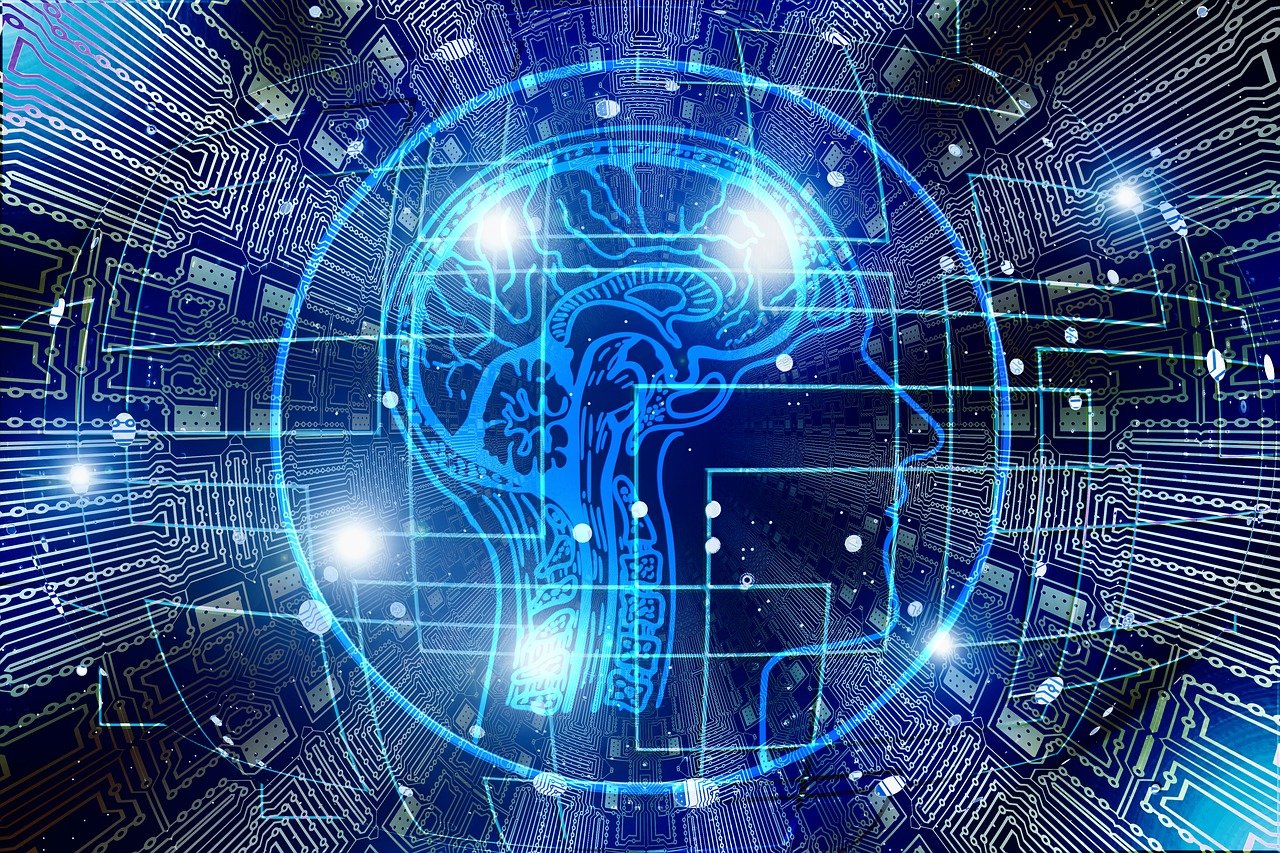
AI-driven systems help farmers optimize resource allocation, leading to higher crop yields and reduced waste.
AI-driven systems are revolutionizing resource allocation in agriculture by offering farmers a level of precision and efficiency that was previously unimaginable. This optimization extends to various crucial aspects of farming operations, further enhancing crop yields and sustainability:
Tailored Nutrient Management: AI analyzes soil data, weather patterns, and historical crop performance to develop personalized nutrient management plans for each field. By ensuring that crops receive the exact nutrients they need, farmers can maximize yields and minimize excess fertilizer runoff, which can harm the environment.
Efficient Water Usage: AI-based irrigation systems monitor soil moisture levels and weather forecasts in real-time. They adjust irrigation schedules and water distribution precisely, ensuring that crops receive adequate hydration without water wastage. This not only conserves a precious resource but also prevents overwatering, which can lead to root diseases.
Dynamic Pest and Disease Control: AI analyzes pest and disease threat levels using data from sensors and remote sensing technologies. It triggers interventions such as targeted pesticide application or the release of beneficial insects only when necessary, reducing the use of chemicals and protecting beneficial organisms.
Precision Planting and Harvesting: AI-powered machinery ensures precise planting depths, seed spacing, and harvest times. This leads to uniform crop growth and ripening, resulting in higher-quality produce and more efficient harvests.
Weather Risk Mitigation: AI algorithms process weather data to predict adverse weather events. Farmers can use these forecasts to make decisions like adjusting planting schedules or protecting vulnerable crops, reducing the risk of yield losses due to weather-related disasters.
Crop Rotation Optimization: AI can recommend optimal crop rotation strategies based on historical data, soil health, and pest pressure. This practice not only boosts yields but also maintains soil fertility and minimizes the buildup of pests and diseases.
Market Analysis: AI can analyze market trends and demand patterns to help farmers decide which crops to plant and when. This ensures that farmers grow crops with strong market demand, reducing the likelihood of surplus production going to waste.
Labor Efficiency: AI-powered machinery and robotics reduce the labor-intensive nature of agriculture. Autonomous equipment can operate continuously, even during off-hours, increasing overall farm productivity.
In essence, AI-driven resource allocation in modern farming doesn’t just optimize one aspect of farming but transforms the entire agricultural ecosystem. The precision and efficiency AI offers are essential for addressing the challenges of feeding a growing global population while minimizing environmental impact. As technology continues to evolve, the role of AI in agriculture will only become more pivotal, fostering sustainable, efficient, and productive farming practices.
Looking for more insights? You’ll find them right here in our extended coverage: Agriculture’s technology future: How connectivity can yield new …

AI enables more efficient use of water, fertilizer, and pesticides, reducing environmental impact and operational costs.
Artificial Intelligence (AI) represents a transformative force in agriculture, offering multifaceted benefits that extend far beyond just operational efficiency. One of its most significant contributions lies in the prudent management of critical resources such as water, fertilizer, and pesticides.
In an era where environmental sustainability is paramount, AI-driven solutions have emerged as crucial tools for responsible farming practices. These technologies analyze a multitude of data points, including soil moisture levels, weather patterns, and crop health, in real time. This comprehensive understanding of the field’s conditions allows for precise and dynamic resource allocation.
Water, a finite and precious resource, is managed with unparalleled precision. AI algorithms determine when and how much irrigation is needed, optimizing water usage to prevent over- or under-watering. This not only conserves water but also mitigates the risk of soil degradation and salinization.
Similarly, fertilizer application is finely tuned. AI considers factors like soil nutrient levels and crop growth stages to calculate the exact amount and type of fertilizer required. The result is not only increased crop yields but also a reduction in the environmental impact, as excess nutrients that could lead to water pollution are minimized.
Pesticide usage, too, undergoes a transformation. AI can detect pest threats early, enabling farmers to deploy targeted interventions only when necessary. This judicious use of pesticides not only reduces the risk of chemical contamination but also safeguards beneficial insects and pollinators essential for biodiversity.
The environmental benefits are not the only advantage; AI-driven precision agriculture significantly cuts operational costs. By minimizing resource waste and optimizing labor, it ensures that every input contributes to maximized output. This increased efficiency benefits both small-scale and large-scale farmers, enhancing profitability and ensuring long-term sustainability.
Furthermore, AI evolves with time, continuously learning and adapting to the specific conditions of each farm. This adaptability ensures that its recommendations and interventions become increasingly precise, leading to a virtuous cycle of improving resource management and environmental stewardship.
In conclusion, AI’s role in agriculture goes beyond efficiency; it stands as a beacon of responsible and sustainable farming. By optimizing the use of water, fertilizer, and pesticides, it not only reduces costs and enhances productivity but also nurtures the delicate balance between agricultural progress and environmental preservation, ensuring a healthier future for our planet and generations to come.
Don’t stop here; you can continue your exploration by following this link for more details: The role of Artificial Intelligence in the European Green Deal

Predictive analytics and data-driven decision-making help farmers proactively manage risks associated with weather, pests, and diseases.
In the ever-evolving world of agriculture, the integration of predictive analytics and data-driven decision-making has emerged as a powerful ally for farmers in their ongoing battle against the unpredictable forces of nature. These advanced technologies are not just tools; they are shields that enable farmers to proactively manage and mitigate risks associated with weather, pests, and diseases, thereby safeguarding their crops and ensuring food security.
When it comes to weather, predictive analytics leverages historical data, real-time weather information, and sophisticated models to provide farmers with remarkably accurate forecasts. These forecasts are not mere predictions; they are valuable insights that allow farmers to anticipate extreme weather events such as droughts, heavy rains, or frost. Armed with this knowledge, farmers can adjust their planting schedules, irrigation plans, and protective measures well in advance, reducing the potential impact of adverse weather conditions on their yields.
Pest and disease management is another arena where predictive analytics shines. With the help of data from various sources, including field sensors and satellite imagery, farmers can track the presence and spread of pests and diseases with unprecedented precision. By analyzing this data, predictive models can alert farmers to potential outbreaks before they become widespread. This early warning system enables farmers to implement targeted pest control measures, minimizing the need for broad-spectrum pesticides and reducing the environmental impact.
Furthermore, data-driven decision-making empowers farmers to optimize their resource allocation. For instance, based on predictions and historical data, farmers can fine-tune their irrigation schedules to conserve water while ensuring crops receive adequate moisture. This not only promotes resource efficiency but also contributes to sustainable farming practices.
In a broader context, these technologies are revolutionizing farm management by offering a holistic view of operations. By integrating data from various sources—weather forecasts, soil sensors, crop health data, and more—farmers gain a comprehensive understanding of their fields. They can identify trends, spot anomalies, and make informed decisions that impact crop health and productivity.
In conclusion, predictive analytics and data-driven decision-making are more than just tools; they represent a paradigm shift in modern agriculture. By proactively managing risks associated with weather, pests, and diseases, farmers are not only safeguarding their livelihoods but also contributing to global food security and sustainability. In this data-driven era, the future of farming is brighter, more resilient, and better equipped to feed a growing world population while minimizing the impact on the environment.
To expand your knowledge on this subject, make sure to read on at this location: The role of Artificial Intelligence in the European Green Deal
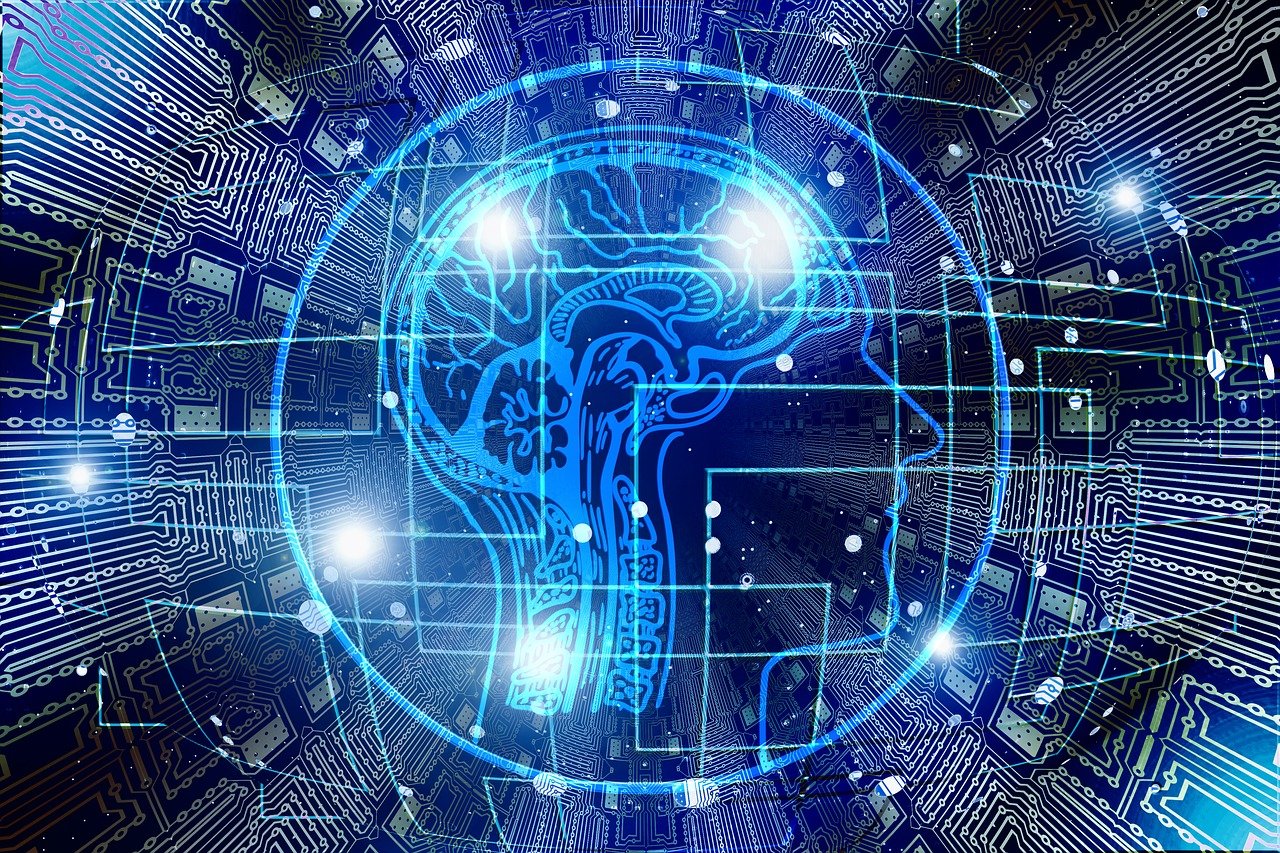
Improved efficiency and reduced input costs translate into improved profitability for farmers.
Improved efficiency and reduced input costs are not just buzzwords in the world of modern agriculture; they are the very pillars upon which the profitability of farmers now rests. This fundamental shift in farming practices, fueled by technological advancements and data-driven decision-making, has far-reaching implications for the financial well-being of agricultural enterprises.
Enhanced Productivity: One of the most significant impacts of improved efficiency is increased productivity. With the aid of advanced machinery, precision agriculture techniques, and AI-driven insights, farmers can achieve higher crop yields on the same or even reduced acreage. This boost in output directly contributes to higher revenue streams, a key factor in bolstering profitability.
Resource Optimization: Efficiency improvements extend to resource management, where farmers can make judicious use of inputs like water, fertilizers, and pesticides. By tailoring these resources precisely to the needs of each field or crop, wastage is minimized, and costs are reduced. This translates into more dollars saved, directly adding to the bottom line.
Labor Savings: Automation and AI-driven systems reduce the labor requirements for many farming tasks. Autonomous machinery, drone surveillance, and automated irrigation systems enable fewer workers to manage larger expanses of land. The resulting labor savings contribute to reduced operational expenses, ultimately improving profitability.
Risk Mitigation: Improved efficiency often goes hand in hand with better risk management. Real-time data monitoring and predictive analytics can help farmers identify potential issues early, such as crop diseases or adverse weather conditions. This proactive approach allows for timely interventions, mitigating potential losses and protecting profits.
Market Access and Quality: The ability to consistently deliver high-quality, traceable products to the market can command premium prices for agricultural produce. Improved efficiency means better quality control, which not only attracts more discerning customers but also ensures compliance with stringent food safety standards. These factors can significantly impact the profit margins for farmers.
Sustainability and Government Incentives: Sustainable farming practices, which are often a result of improved efficiency, are increasingly rewarded by consumers and government policies. Many governments offer incentives and subsidies for farmers who adopt environmentally friendly practices. This not only reduces costs but also opens up new revenue streams, contributing positively to profitability.
In the grand scheme of modern agriculture, improved efficiency and reduced input costs are the linchpin to profitability. Farmers who embrace these advancements not only secure their economic viability but also play a vital role in ensuring food security for a growing global population. As technology continues to advance and agricultural practices evolve, the path to profitability in farming becomes increasingly intertwined with the pursuit of efficiency and sustainability.
To expand your knowledge on this subject, make sure to read on at this location: Economic impacts of artificial intelligence (AI)

AI promotes sustainable farming practices by reducing the environmental footprint of agriculture.
AI stands at the forefront of a transformative wave in agriculture, ushering in an era of sustainable farming practices that hold the promise of reducing the environmental footprint of this vital industry. The impact of AI on sustainability in agriculture is multifaceted and far-reaching, with several key mechanisms driving its contribution to a greener and more environmentally responsible future for farming:
Precision Resource Management: AI-powered systems are instrumental in optimizing resource use on farms. Whether it’s water, fertilizers, or pesticides, AI can precisely manage the application of these resources. By ensuring that only the necessary amounts are used when and where they are needed, AI minimizes waste and runoff, reducing the pollution of water sources and preserving precious resources.
Minimized Chemical Usage: AI-driven technologies, such as precision spraying systems, enable targeted and precise application of pesticides and herbicides. This targeted approach minimizes the need for broad-spectrum chemical treatments that can harm non-target organisms and pollinators. Consequently, AI reduces the environmental impact of chemical usage in agriculture.
Sustainable Irrigation: Water is a finite resource, and sustainable irrigation practices are paramount. AI-driven irrigation systems analyze data from various sources, including soil moisture levels, weather forecasts, and crop growth patterns, to optimize irrigation schedules and amounts. This minimizes over-irrigation, reducing water wastage and the strain on freshwater sources.
Soil Health Management: Healthy soil is the foundation of sustainable agriculture. AI facilitates the monitoring of soil health by analyzing data on nutrient levels, pH, and microbial activity. By identifying soil deficiencies and imbalances, AI helps farmers make informed decisions about soil amendments, reducing the need for excessive fertilization and ensuring long-term soil vitality.
Reduced Erosion and Runoff: AI assists in the prevention of soil erosion and runoff. It can predict erosion-prone areas within a field and recommend appropriate interventions, such as contour farming or cover cropping. By stabilizing soil, AI helps protect nearby water bodies from sedimentation and chemical runoff.
Carbon Sequestration: AI technologies can optimize crop rotations and land management practices to enhance carbon sequestration in agricultural soils. By increasing the organic matter content in soils and promoting practices like agroforestry, AI contributes to mitigating greenhouse gas emissions and combating climate change.
Biodiversity Conservation: AI-driven pest management strategies focus on early detection and targeted intervention, reducing the need for indiscriminate pesticide use. This, in turn, preserves beneficial insect populations, supporting biodiversity within and around agricultural ecosystems.
Adaptive Climate Resilience: AI is instrumental in helping farmers adapt to changing climate conditions. By analyzing historical climate data and real-time weather information, AI systems can recommend adaptive strategies such as altered planting schedules or drought-resistant crop varieties.
Economic Viability: Importantly, sustainable farming practices fostered by AI often enhance the economic viability of farms. Reduced resource usage and optimized yields contribute to the financial health of agricultural operations, making sustainable practices more accessible and attractive to farmers.
In conclusion, AI’s promotion of sustainable farming practices is a pivotal step toward reducing the environmental impact of agriculture. It offers a path to harmonizing the goals of increased food production and resource conservation, making it an essential ally in the pursuit of a more sustainable and resilient agricultural future.
For a comprehensive look at this subject, we invite you to read more on this dedicated page: The role of Artificial Intelligence in the European Green Deal

While AI holds great promise in agriculture, challenges such as data privacy, initial investment costs, and the need for specialized knowledge remain. However, as technology continues to advance and AI becomes more accessible, these challenges are gradually being addressed.
The integration of AI into agriculture indeed holds immense promise, but it is not without its set of challenges. As we navigate the exciting frontier of agricultural technology, it’s essential to acknowledge and address these hurdles, while also recognizing the tremendous potential that lies ahead.
One of the foremost challenges is data privacy. AI-driven agricultural systems rely on vast amounts of data, including sensitive information about crop yields, soil conditions, and farm management practices. Farmers and stakeholders rightly demand assurances that their data will be safeguarded and used responsibly. The need for stringent data protection measures and transparent data management practices is paramount to build trust and foster widespread adoption of AI solutions in agriculture.
Another challenge is the initial investment costs associated with adopting AI technology. Implementing AI-powered systems, such as autonomous machinery or precision farming software, can require a significant upfront investment. This financial barrier can be especially daunting for small-scale farmers or those in developing regions. However, as technology matures and becomes more commonplace, economies of scale are likely to reduce these costs, making AI solutions more accessible to a broader spectrum of farmers.
The need for specialized knowledge is another consideration. To fully harness the potential of AI in agriculture, farmers and agricultural professionals must acquire a new set of skills and knowledge. This transition can be daunting, especially for those with decades of traditional farming experience. However, it presents an opportunity for education and training initiatives to bridge the knowledge gap, empowering individuals to leverage AI effectively for improved farming outcomes.
Fortunately, as technology continues to advance, these challenges are gradually being addressed. The convergence of AI with the Internet of Things (IoT), cloud computing, and big data analytics is driving innovation at an unprecedented pace. These synergies are leading to the development of more cost-effective AI solutions, making them more accessible to a broader range of farmers.
Moreover, regulatory frameworks and industry standards are evolving to address data privacy concerns and ensure ethical AI use in agriculture. This regulatory clarity can provide a foundation of trust and accountability, further facilitating AI adoption.
Additionally, knowledge-sharing platforms, training programs, and collaborations between tech companies and agricultural organizations are helping farmers acquire the skills needed to harness AI’s potential effectively. These initiatives empower individuals with the know-how to make informed decisions and maximize the benefits of AI in their farming practices.
In conclusion, while AI in agriculture faces challenges, the path forward is promising. As technology matures, costs decrease, and knowledge becomes more widespread, AI has the potential to revolutionize farming, ushering in an era of increased efficiency, sustainability, and food security. By addressing these challenges head-on and embracing the opportunities that AI presents, the agricultural sector can look forward to a brighter and more technologically advanced future.
Looking for more insights? You’ll find them right here in our extended coverage: Precision Medicine, AI, and the Future of Personalized Health Care …

Conclusion
The future of modern farming lies in the intelligent integration of AI technologies. As the global population grows, and environmental challenges mount, AI-driven farming practices are essential for ensuring food security, sustainable agriculture, and a resilient farming industry. In the coming years, we can expect AI to continue transforming agriculture, making it more efficient, environmentally friendly, and economically viable.
The future of modern farming lies in the intelligent integration of AI technologies, heralding a new era of precision agriculture that is more vital than ever before. As the global population grows at an unprecedented rate and environmental challenges mount, AI-driven farming practices are not just advantageous; they are essential for ensuring food security, sustainable agriculture, and a resilient farming industry. In the coming years, we can expect AI to continue its transformative role in agriculture, making it more efficient, environmentally friendly, and economically viable.
Precision Agriculture for a Hungry World
The global population is projected to reach 9.7 billion by 2050, placing immense pressure on the agricultural sector to produce more food. AI, with its predictive capabilities and data-driven insights, is poised to help meet this burgeoning demand. It allows farmers to optimize every aspect of their operations, from planting to harvesting, minimizing waste and maximizing yields. This precision in agriculture is crucial in ensuring that the world’s growing population has access to a steady supply of food.
Sustainability and Environmental Stewardship
AI-driven farming practices align seamlessly with the imperatives of sustainability and environmental stewardship. By fine-tuning irrigation, fertilization, and pest management, AI minimizes the environmental footprint of agriculture. It reduces the overuse of water, curtails the release of harmful chemicals into ecosystems, and conserves land by increasing crop yields. AI also helps farmers adapt to the challenges posed by climate change, allowing them to make informed decisions based on real-time weather and climate data.
Resilience in the Face of Uncertainty
In an era marked by unpredictable climate events, market fluctuations, and supply chain disruptions, AI provides farmers with tools to build resilience. By predicting crop diseases and pest outbreaks, as well as optimizing planting times to avoid extreme weather, AI enables farmers to mitigate risks and maintain stable production. This resilience is critical for safeguarding both local and global food supplies.
Empowering Farmers and Rural Communities
AI empowers farmers by equipping them with valuable information and insights that were previously inaccessible. This empowerment extends beyond the field and influences broader economic and social dynamics. By increasing the efficiency and profitability of farming operations, AI contributes to the economic viability of rural communities, helping preserve them in the face of urbanization trends.
Global Impact and Collaboration
The global nature of AI-driven agriculture also fosters collaboration and knowledge sharing among farmers, researchers, and policymakers worldwide. Best practices, data-driven insights, and AI-driven innovations can be disseminated rapidly, benefitting farming communities across borders and helping to bridge the gap between developed and developing agricultural regions.
In conclusion, the intelligent integration of AI technologies into agriculture is not merely a trend but a necessity for the future. It represents a transformative force that addresses the challenges of food security, sustainability, and resilience in the face of a changing world. AI-driven farming practices are instrumental in safeguarding our ability to feed a growing global population while preserving the environment and supporting the livelihoods of farming communities. As AI continues to advance, its potential to revolutionize agriculture for the better remains boundless.
For additional details, consider exploring the related content available here AI in Agriculture | Application of Artificial Intelligence in Agriculture
More links
To delve further into this matter, we encourage you to check out the additional resources provided here: Learn How Artificial Intelligence is Transforming the Agriculture …
